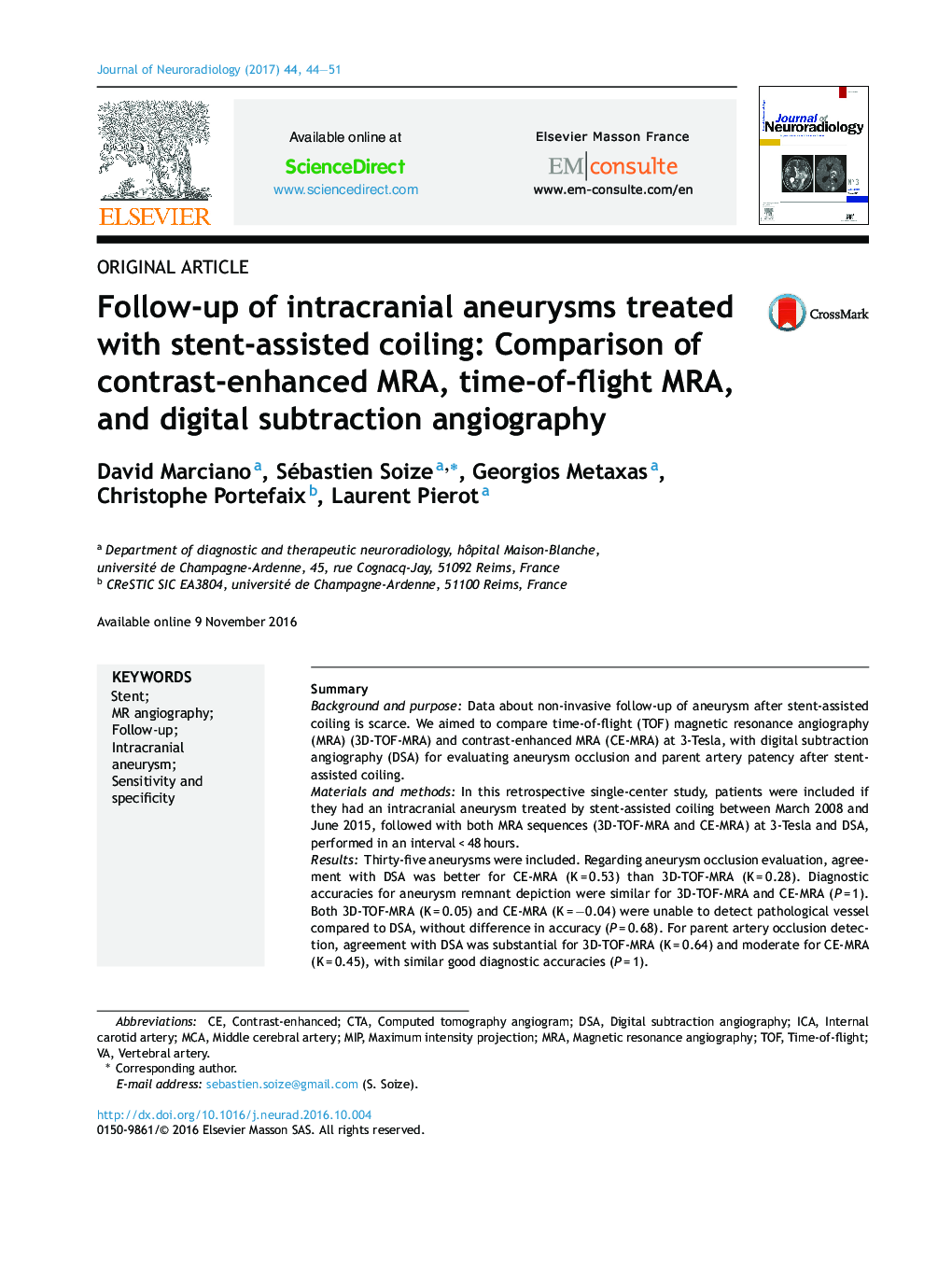| Article ID | Journal | Published Year | Pages | File Type |
|---|---|---|---|---|
| 5727111 | Journal of Neuroradiology | 2017 | 8 Pages |
SummaryBackground and purposeData about non-invasive follow-up of aneurysm after stent-assisted coiling is scarce. We aimed to compare time-of-flight (TOF) magnetic resonance angiography (MRA) (3D-TOF-MRA) and contrast-enhanced MRA (CE-MRA) at 3-Tesla, with digital subtraction angiography (DSA) for evaluating aneurysm occlusion and parent artery patency after stent-assisted coiling.Materials and methodsIn this retrospective single-center study, patients were included if they had an intracranial aneurysm treated by stent-assisted coiling between March 2008 and June 2015, followed with both MRA sequences (3D-TOF-MRA and CE-MRA) at 3-Tesla and DSA, performed in an interval < 48 hours.ResultsThirty-five aneurysms were included. Regarding aneurysm occlusion evaluation, agreement with DSA was better for CE-MRA (K = 0.53) than 3D-TOF-MRA (K = 0.28). Diagnostic accuracies for aneurysm remnant depiction were similar for 3D-TOF-MRA and CE-MRA (P = 1). Both 3D-TOF-MRA (K = 0.05) and CE-MRA (K = â0.04) were unable to detect pathological vessel compared to DSA, without difference in accuracy (P = 0.68). For parent artery occlusion detection, agreement with DSA was substantial for 3D-TOF-MRA (K = 0.64) and moderate for CE-MRA (K = 0.45), with similar good diagnostic accuracies (P = 1).ConclusionAfter stent-assisted coiling treatment, 3D-TOF-MRA and CE-MRA demonstrated good accuracy to detect aneurysm remnant (but tended to overestimation). Although CE-MRA agreement with DSA was better, there was no statistical difference between 3D-TOF-MRA and CE-MRA accuracies. Both MRAs were unable to provide a precise evaluation of in-stent status but could detect parent vessel occlusion.
